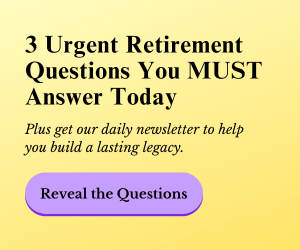Talking vs Dating: What's the Difference?
by Ryan Hart | Updated on May 13, 2024 | Post may contain affiliate links. As an Amazon Associate we earn from qualifying purchases.
Talking and dating are two relationship concepts that are often used interchangeably, but they are not the same. If you are new to the dating scene, you may be wondering what the difference between talking and dating is.
Talking refers to the initial stage of getting to know someone. It is a casual phase where two people are exploring their compatibility and trying to determine if they want to pursue a romantic relationship.
During this phase, you may flirt with each other, have casual conversations, and learn about each other’s interests, personalities, and lifestyles. It is not exclusive, and both parties are free to see other people.
Dating, on the other hand, is a more serious and committed stage of a romantic relationship. It is a phase where two people have decided to pursue a romantic relationship exclusively.
During this phase, you may go on dates, engage in more intimate conversations, and learn more about each other’s goals and aspirations. Dating is a more committed relationship stage, often leading to a long-term commitment such as marriage.
Throughout this article, we will examine the differences between these two stages of a romantic relationship.

What is Talking?
When it comes to the early stages of a romantic relationship, ‘talking’ refers to getting to know each other. This phase usually involves casual conversations, exploring each other’s personalities, interests, and lifestyles, and flirting to see if there is a spark of interest.
Social Media Messages and Texting
In today’s digital age, social media, dating apps, and texting play a significant role in the ‘talking’ phase. Platforms like Instagram, Facebook, and Twitter allow you to connect and interact with potential partners, while texting and direct messages (DMs) enable you to communicate more frequently and quickly.
However, it’s crucial to remember that social media and texting can also lead to confusion and miscommunication. It’s easy to misinterpret a message or read too much into someone’s social media posts, leading to misunderstandings and unnecessary drama.
Exploring and Flirting
During the ‘talking’ phase, exploring each other’s interests and hobbies is essential to see if you have enough in common to move forward. Flirting is also a crucial part of this phase, as it helps establish whether there is a spark of interest between you and the other person.
At this stage, it’s essential to set boundaries and be respectful of each other’s comfort levels. Flirting and physical contact aren’t for everyone, so you have to communicate honestly and openly about your preferences.
Setting Boundaries
Establishing boundaries is a crucial aspect of the ‘talking’ phase. It’s essential to communicate your expectations and limits to avoid misunderstandings or hurt feelings.
For example, establish boundaries around how frequently you communicate, how much personal information you share, or what types of physical touch you’re comfortable with.
What is Dating?
When it comes to dating, there are many different definitions and interpretations. However, generally speaking, dating refers to the stage in a potential romantic relationship where two people explore their compatibility and get to know each other on a deeper level.
Spending Time Together
The dating stage typically involves going on dates and spending time together in person. This can include activities like going out to dinner, seeing a movie, or attending a concert. During this stage, it’s common to engage in casual conversation and get to know each other’s interests and personalities.
Expectations and Commitment
While the dating stage is generally considered casual, there are often underlying expectations and levels of commitment. For example, some people may be dating with the intention of finding a serious, long-term relationship, while others may be more interested in keeping things casual and non-exclusive.
Physical Intimacy
Physical intimacy can also be a factor in the dating stage, but it’s important to note that not everyone will be comfortable with this level of intimacy early on. Some people may prefer to take things slow and get to know each other before becoming physically intimate, while others may be more comfortable with a more physical relationship from the start.
Differences Between Talking and Dating
In this section, we’ll explore the differences between talking and dating:
Casual vs Serious
One of the main differences between talking and dating is the level of seriousness. Talking is usually more casual and laid-back, while dating is often more serious.
When you’re talking to someone, you’re still getting to know them and figuring out if you want to pursue a relationship with them.
Dating, on the other hand, implies that you’re already interested in the person and are actively pursuing a romantic relationship with them.
Multiple People vs. Exclusive
Another difference between talking and dating is exclusivity. When you’re talking to someone, it’s usually assumed that you’re not exclusive and may be talking to or seeing other people as well.
Dating, on the other hand, implies that you’re exclusive and not seeing anyone else. Of course, this can vary depending on the individual, but generally speaking, dating is a more exclusive stage than talking.
Miscommunication and Confusion
One of the biggest challenges of the talking stage is communication and clarity. Since talking is a more casual stage, there’s often a need for more clarity around what each person wants and expects from the relationship.
This can lead to confusion and misunderstandings, ultimately leading to the end of the relationship. Communication is vital during the talking stage to ensure that both parties are on the same page.
How to Move from Talking to Dating
Congratulations! You have been talking to someone for a while and feel like you have a spark between you. You are starting to wonder if you are ready to take things to the next level and start dating. Here are some things to consider as you transition from ‘talking’ to ‘dating.’
Signs of Interest
Before you make the transition, it is important to make sure that you both have a mutual interest in dating. Look for signs that the other person is interested in you romantically, such as:
- Flirting
- Physical touch (e.g., hand-holding, hugs)
- Compliments
- Asking personal questions
- Making plans for the future together
If you are still determining if the other person is interested in dating, you can always ask them directly. It’s better to be clear about your intentions than to assume things and end up disappointed.
Trusting Each Other
In any relationship, trust is essential, and it becomes even more important as you transition from ‘talking’ to ‘dating.’ You need to be able to trust each other to be honest, communicate openly, and respect each other’s boundaries.
If you have any past issues with trust or have been hurt in previous relationships, it’s important to be upfront about that with your potential partner. The process of building trust takes time, but it is well worth it.
Communication of Intentions
As you start to consider dating, it’s essential to communicate your intentions clearly. Be honest about what you are looking for in a relationship and what your expectations are. This includes discussing whether you want to be exclusive or not.
It’s important to make sure that you are both on the same page before you start dating. If one person is looking for a casual relationship and the other is looking for something more serious, it’s better to know that upfront.
Remember, the transition from ‘talking’ to ‘dating’ is a big step, and it’s essential to take your time and make sure that you are both comfortable with the transition. With open communication, trust, and mutual interest, you can make the transition successfully and start a happy, healthy relationship.
Bottom Line

In conclusion, it’s important to understand the differences between talking and dating. It’s important to communicate with your partner about what stage you’re in and what you’re looking for.
If you’re talking, make sure you’re both on the same page about your intentions. If you’re dating, ensure you’re committed to each other and working towards a future together.
Remember, there’s no right or wrong way to approach a relationship. It’s all about what works for you and your partner. Make sure you communicate openly and honestly with each other and make sure you are both on the same page.

Ryan Hart is a licensed insurance agent, writer, and former home designer. He is on a mission to help couples protect their homes in retirement with life insurance and annuities.
Want to connect with Ryan? Click here to get his FREE retirement planning newsletter
